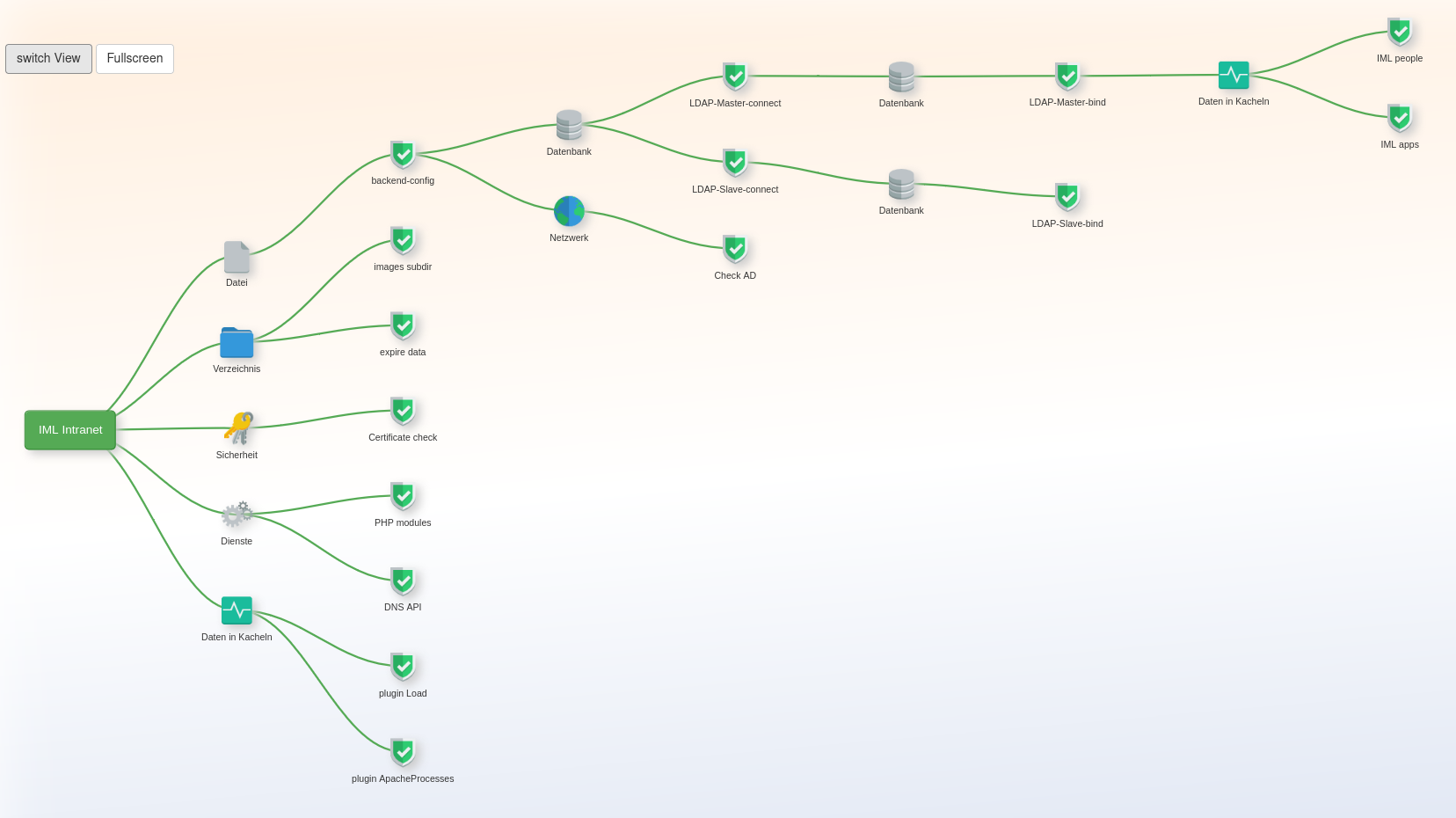Table of Contents
Check functions in detail
A check makes a single test like verify if a file exists, a database can be connected and so on. A check will be added with $oMonitor->addCheck(...). You can add as many checks as you want.
You should start with a simple check.
And I suggest to add many checks to verify in many details if your application has all requirements to run. You can chain the checks - then it becomes tool to to detect fast if something is not running and why.
The available checks are the files in public_html/client/plugins/checks/.
General include of a check
Have a look to Let’s have a look to public_html/client/index.sample.php.
You can add all checks after initializing the appmonitor-client class that is initialized on top of the file.
The class has a render() method that generates the json for you. It must be at the end.
In the area between $oMonitor = new appmonitor(); and render(); you can place
as many checks you want.
The syntax is
// init (just once needed)
require_once('classes/appmonitor-client.class.php');
$oMonitor = new appmonitor();
// ...
// now you can use addCheck() multiple times.
$oMonitor->addCheck(
[
"name" => "[short name of the check]",
"description" => "[an a bit longer description]",
"group" => "[optional: name of a group]",
"parent" => "[optional: reference a name of another check]",
"check" => [Array for the check],
"worstresult" => RESULT_WARNING
]
);
| key | type | description |
|---|---|---|
| name🔸 | (string) | “id” if the check |
| description🔸 | (string) | a short description |
| group | (string) | optional override name of a group |
| parent | (string) | optional set a “name” of another check to create a deoendency chain; without parent do not use this key or set it to null. |
| check🔸 | (array) | check to perform |
| worstresult | (integer) | optional: limit maximum error level if the check fails; if the check should fail then its result is an error - but this check is not highly relevant for a running application then you can override the influence to the total result set a maximum level i.e. RESULT_WARNING. |
🔸 required
The key check contains 2 subkeys:
"function" => "[Name of a defined check]",
"params" => [key->value array; count and keys depend on the function]
Groups
This functionality has impact in the rendered view in the web ui only.
Without any group all check results are connected directly to the application node.
+--------+ +---------+
| My App +--------->| Check 1 |
+--------+ \ +---------+
|\ +---------+
| `----->| Check 2 |
\ +---------+
\ +---------+
`----->| Check 3 |
+---------+
By adding a group “in front” of a check a node for the group will be inserted. All checks of the same type will are connected with a group of checks.
Example:
The checks 1 + 2 get the group “file”. Check 3 gets a group “database”. The graphical view will change like this:
+--------+ +--------+ +---------+
| My App +--------->| File +--------->| Check 1 |
+--------+ \ +--------+ \ +---------+
| \ +---------+
| `----->| Check 2 |
| +---------+
\ +-----------+ +---------+
`---->| Database +------>| Check 3 |
+-----------+ +---------+
A default group is set in all by default shipped checks.
You can override it by setting another group.
| Group | Description |
|---|---|
| cloud | cloud icon |
| database | database icon |
| deny | deny sign |
| disk | hard disk icon |
| file | file icon |
| folder | folder icon |
| monitor | monitor graph icon |
| network | globe icon |
| security | keys icon |
| service | cogs icon |
Chaining with a parent
With a chaining value you can reference another check by giving its name value.
As an example: One of the first checks can be the check to read a config. In it are your database credentials. In the check the database access you set a reference to the config check as parent.
In the monitor web ui you get a rendered tree.
